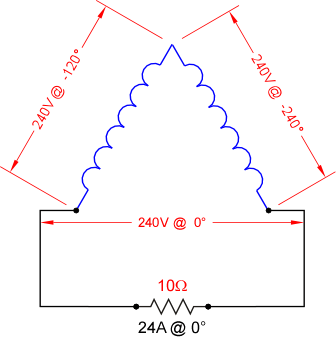What good is that going to do? Does it cover winding current of a line-to-line connected, single phase load on a 3? generator with delta-configured output windings? Even trying to find such a discussion on the internet regarding any delta power source proves difficult. We are typically taught to connect balanced loads. There's some discussion on [relatively minor] unbalanced loads, and unbalanced faults... but none that I could find discussing the apparent extreme single phase load.Smart $ ...
Rather than play your "Who's on First" game, I can recommend an excellent text on 3-phase generators!
Regards Phil Corso
Besides, this is basic electrical theory... though not discussed in texts and has nothing to do with generators specifically. When we narrow the discussion to generators, it presents nuances but does not negate the basics.

